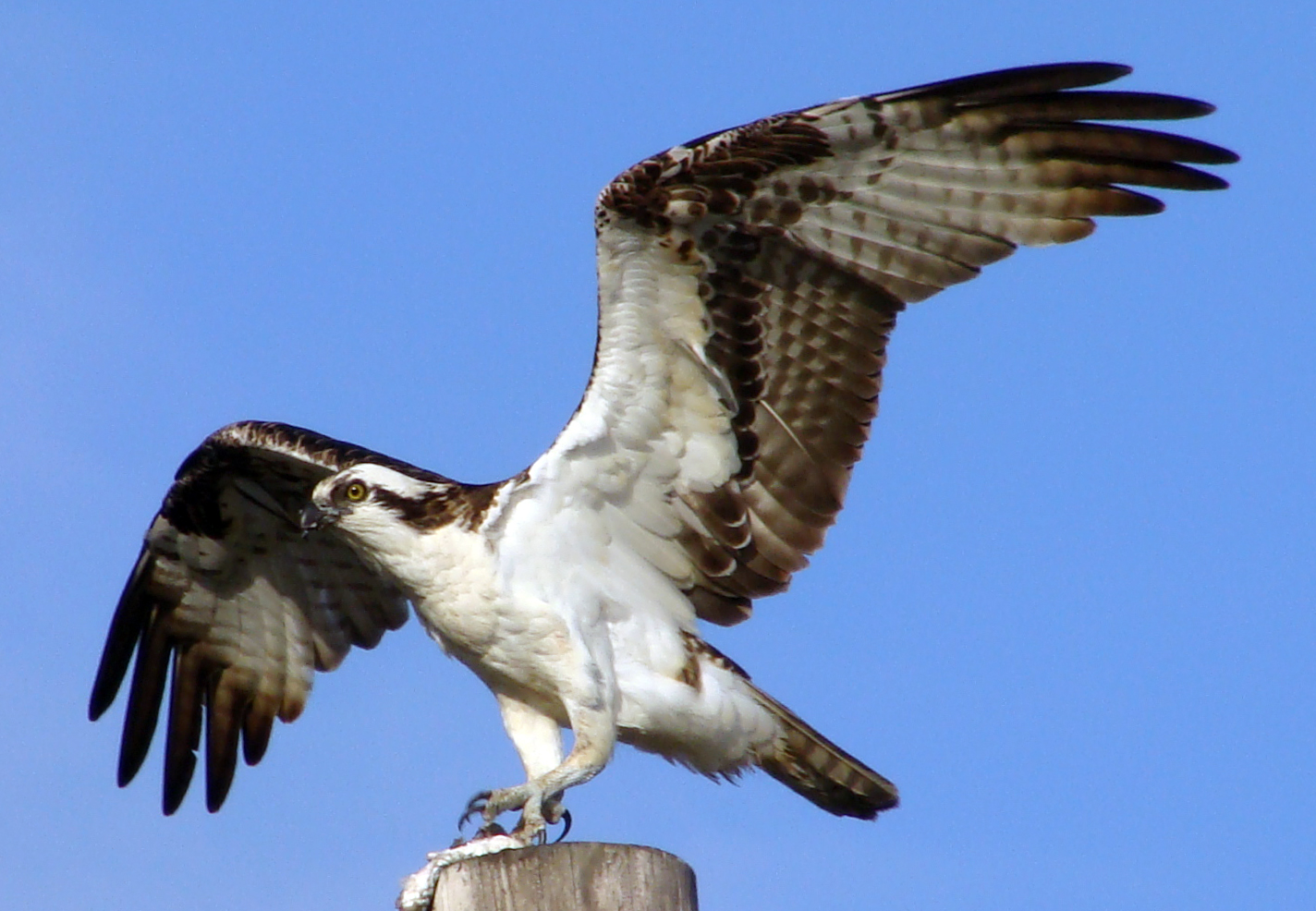The Osprey is a remarkable bird of prey known for its incredible hunting skills and stunning appearance. This article aims to provide an in-depth look at the Osprey, its habitat, behavior, and conservation status. With a focus on the Osprey, we will explore various aspects of this bird and its significance in the ecosystem.
The Osprey, scientifically known as Pandion haliaetus, is a large raptor that primarily feeds on fish. Found on every continent except Antarctica, these birds are easily recognizable due to their distinctive black and white plumage and unique hunting techniques. In this article, we will delve into the characteristics, habitat, diet, and conservation efforts surrounding the Osprey.
As we explore the fascinating world of the Osprey, we will highlight its importance in the ecosystem and the challenges it faces due to habitat loss and environmental changes. By the end of this article, readers will have a comprehensive understanding of the Osprey and its role in nature.
Table of Contents
- Biography of the Osprey
- Physical Characteristics
- Natural Habitat
- Diet and Hunting Techniques
- Behavior and Social Structure
- Conservation Status
- Interesting Facts About the Osprey
- Conclusion
Biography of the Osprey
The Osprey is a unique species of bird known for its adaptability and specialized hunting capabilities. Below is a brief biography of the Osprey:
| Common Name | Osprey |
|---|---|
| Scientific Name | Pandion haliaetus |
| Family | Pandionidae |
| Length | 20-26 inches (51-66 cm) |
| Wingspan | 5.5-6.6 feet (1.7-2.0 m) |
| Weight | 3-4.5 pounds (1.4-2.0 kg) |
| Habitat | Near water bodies (lakes, rivers, and coastal regions) |
| Diet | Primarily fish |
| Conservation Status | Least Concern |
Physical Characteristics
The Osprey is easily identifiable by its striking physical features. Here are some key characteristics:
- Coloration: Ospreys have a white head and underparts with dark brown wings and back.
- Eyes: Their yellow eyes are adapted for keen vision, essential for spotting fish from above.
- Feet: Ospreys possess unique, spiny toes that help grip slippery fish.
Sexual Dimorphism
Female Ospreys are generally larger than males, but both sexes have similar plumage. This size difference aids in reproduction, as females require more energy for egg production.
Natural Habitat
Ospreys thrive in various habitats, primarily found near water bodies. Their habitats include:
- Lakes: Freshwater lakes provide ample fishing opportunities.
- Rivers: Fast-flowing rivers are ideal for hunting.
- Coastal Areas: Ospreys are often seen near coastal regions where fish are abundant.
Diet and Hunting Techniques
The diet of the Osprey mainly consists of fish, accounting for over 99% of its food intake. They employ several impressive hunting techniques:
- Aerial Diving: Ospreys dive from heights of up to 100 feet to catch fish.
- Talons: Their sharp talons can penetrate fish scales and hold onto slippery prey.
- Vision: Ospreys can spot fish from great distances, allowing them to target the best catches.
Behavior and Social Structure
Ospreys are known for their remarkable behavior, especially during the breeding season. Key behaviors include:
- Monogamous Pairing: Ospreys usually mate for life, returning to the same nest each year.
- Nesting: They build large nests near water, often reusing them for several seasons.
- Parental Care: Both parents share the responsibility of feeding and caring for their young.
Conservation Status
While the Osprey population is currently stable, they face several threats that could impact their future:
- Habitat Loss: Urban development and pollution threaten their natural habitats.
- Environmental Contaminants: Pesticides and pollutants can accumulate in the food chain, affecting Osprey health.
- Climate Change: Changes in water levels and temperatures can impact fish populations.
Conservation efforts are underway to protect the Osprey and its habitat, including habitat restoration and public education.
Interesting Facts About the Osprey
Here are some fascinating facts about the Osprey that highlight its uniqueness:
- Ospreys have a reversible outer toe that allows them to grasp fish more effectively.
- They can dive at speeds of up to 40 mph when hunting.
- Ospreys have been known to migrate over 3,000 miles between breeding and wintering grounds.
Conclusion
In conclusion, the Osprey is a remarkable bird of prey that plays a crucial role in our ecosystem. With its impressive hunting skills, unique adaptations, and conservation status, the Osprey continues to fascinate bird watchers and nature enthusiasts alike. We encourage readers to learn more about this magnificent bird and support conservation efforts to protect its habitat.
If you have any thoughts or questions about the Osprey, feel free to leave a comment below. Don't forget to share this article with fellow nature lovers and explore more content on our site!
Penutup
Thank you for reading! We hope this article has provided you with valuable insights into the world of the Osprey. We invite you to return to our site for more informative and engaging content about nature and wildlife.
You Might Also Like
Campbell Puckett: The Rising Star In Film And TelevisionSheila Marie Ryan: The Life And Legacy Of A Remarkable Woman
Jennifer Cheyne: The Rising Star Of The Entertainment Industry
Raven Hart: The Rising Star Of The Entertainment Industry
Noble Knight Games: Your Ultimate Destination For Board Games And Collectibles
Article Recommendations
- Paul Walker Died
- Baby Suji
- Tina Trahan Age
- Michael Boulos Religion And Beliefs
- Elon Musk Mom Satanist
- Jellybeanbrains Porn
- Vegamovies Netflix Bollywood
- Desiree Garcia Mega
- Angelaalvarez Onlyfans Leaked
- Vegamovies Re Hindi Dubbed


